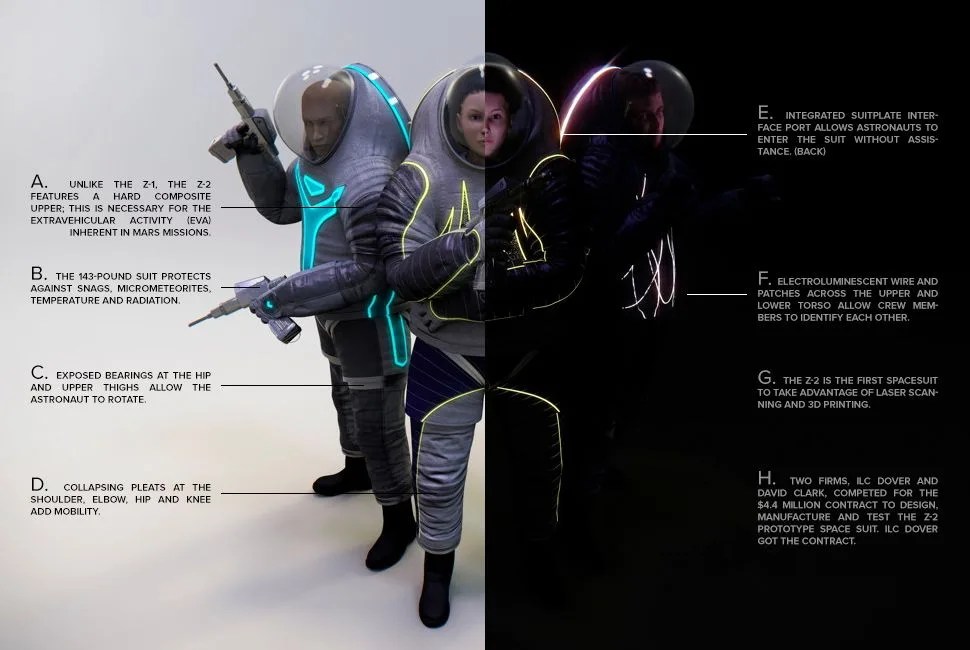Picture a spacesuit. Now get your buddy to picture a spacesuit. Chances are, you’re picturing the same thing, plus or minus a few small details like patches. The white suit with its iconic gold visor has remained virtually unchanged since 1998. In 2012, NASA released a non-functional prototype, the Z-1, but if they ever get around to sending someone to Mars, astronauts might make the trip in a new suit: the Z-2. It’s the first spacesuit for which NASA solicited public opinion, letting people choose between three designs: “Technology,” which took home 60 percent of the vote, and the strangely named “Biomimicry” and “Trends in Society.” The audience vote didn’t effect any of the suit’s technical specs, just the shape of the light-emitting patches on the torso. Hate the design? Thank your neighbor. The suit will go for vacuum testing in November.
A Unlike the Z-1, the Z-2 features a hard composite upper; this is necessary for the extravehicular activity (EVA) inherent in Mars missions.
B The 143-pound suit protects against snags, micrometeorites, temperature and radiation.
C Exposed bearings at the hip and upper thighs allow the astronauts to rotate their torsos with ease.
D Collapsing pleats at the shoulder, elbow, hip and knee add mobility, a key in the tight confines of a spaceship.
E Integrated suitplate interface port allows astronauts to enter the suit without assistance.
F Electroluminescent wire and patches across the upper and lower torso allow crew members to identify each other.
